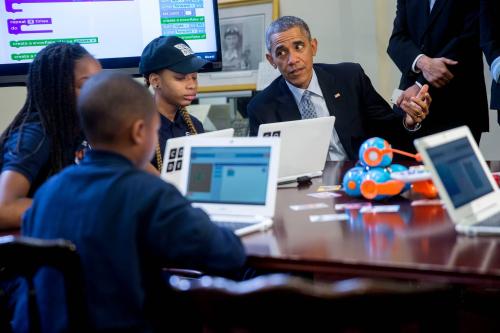2011 was a historic year for a number of reasons, most notably for the Arab Spring and Occupy Wall Street protest movements. However, 2011 will also be remembered outside of politics for its new technology, given how these developments have changed society over the past five years alone.
Apple introduced the world to Siri, a voice-activated digital assistant available on iPhones that could answer questions and take notes. 2011 was also the year that Uber expanded outside the San Francisco area, reaching other large cities in the U.S. and abroad. Finally, 2011 began the latest debate on whether robots and artificial intelligence could displace a significant number of workers. This combination of trends has already made a large impact in five years, and that impact is only likely to grow in the next five years and beyond.
Digital assistants
Smartphones put a computer, a camera, and GPS in everyone’s pocket. After smartphones became ubiquitous, most upgrades have seen incremental improvements in processor speed, storage capacity, and camera quality. However, the launch of Siri on Apple iPhones in 2011 proved that smartphones could do more than absorb the functionality of existing gadgets. Combining a microphone with voice recognition software and internet connectivity gave users another way to input and then receive information from smartphones. Ask a digital assistant a question, and it will respond with the answer, launch a relevant application, or politely confess its ignorance. As they become more common and more capable, digital assistants are changing the way we interact with computers.
Uber
Uber’s expansion in 2011 brought the ridesharing service to New York, Chicago, Washington, and their first international location in Paris. Since then, Uber has grown at a break-neck pace in terms of riders, cities served, and venture capital funding. By mediating transactions between passengers and drivers who own their cars, Uber forgoes the expense of maintaining a vehicle fleet and keeping drivers on their payroll. Instead, their smartphone app connects drivers with riders and handles payments. With few overhead costs, Uber can quickly establish itself in new markets before their competition. This business model has been emulated by many other companies in the sharing economy, like Airbnb, to more efficiently use assets that would otherwise sit idle.
“Software eating the world”
Uber and Siri are examples of software intervening in everyday transactions, a phenomenon that venture capitalist Marc Andreesen described as “software eating the world” in a 2011 Wall Street Journal op-ed. Applying software to workplace tasks has led many technologists, economists, and other thinkers to consider a future where artificial intelligence and robots can replace a substantial amount of human labor. Andrew McAfee and Erik Brynjolfsson, professors at the Massachusetts Institute of Technology, published Race Against the Machine to discuss the accelerating development of automation technologies. They are optimistic that new technology will create more jobs than they destroy, but many of their critics worry that technological change will outpace the ability of human labor to adapt.
After five years, each of these trends continues unabated. Other digital assistants now compete with Siri on smartphones, computers, cars, and in the home. Soon, a digital assistant will always be within earshot to answer questions. The rise of Uber has inspired competitors around the world, and new partnerships with car manufacturers anticipate a future where cars are shared rather than owned. Robots and artificial intelligence have not yet caused mass technological unemployment, but neither have they caused appreciable gains in productivity using conventional metrics, so the debates over the economic impacts of technology drag on. Just as like the Arab Spring and Occupy movements continue to have political ramifications in 2016, technologies introduced in 2011 continue to make an impact today. Measuring that impact will take another five years or even longer. See you in 2021.



Commentary
2011: A technology inflection point, five years later
June 29, 2016